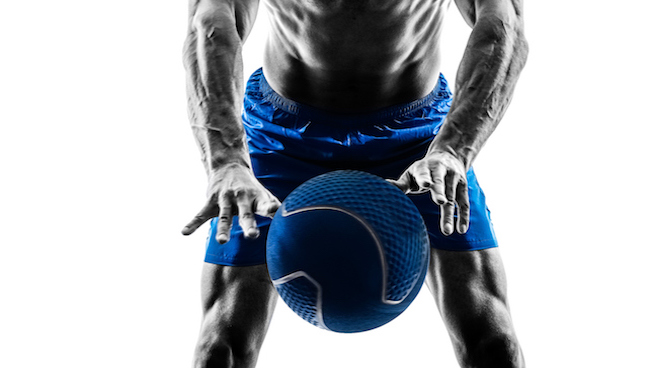Ask the Experts: Why Do I Get Extremely Sore After a New Workout?
Q: Why Do I Get Extremely Sore After Starting a New Workout Program?
A: We’ve all been there. You hit the weights for the first time in a while or try a new exercise, and the next morning you can barely move. And it gets worse as the day goes on.
Why are your muscles screaming at you? You’re experiencing what’s called Delayed Onset Muscle Soreness (DOMS), a period of extreme muscle soreness that occurs 24 to 72 hours after an intense workout.
The National Strength and Conditioning Association explains, “exercise-induced muscle damage followed by an inflammation-induced increase in fluid in the muscle probably causes the muscle discomfort, at least in part.” This is accompanied by a temporary decrease in strength and mobility.
Although it’s not completely clear what’s happening inside your muscles, the pain is a sign your muscles are adapting to the new challenges you placed on them. And adaptation is the key to making strength and size gains.
However, shocking your system and inducing DOMS can derail your training program, so it’s best to avoid extremely painful muscle soreness. This is possible by starting slow and gradually progressing to more intense exercises and heavier lifts. You should strive to be sore after a workout, but not to the point where it hurts to move.
If you’re experiencing extreme muscle soreness, try one of these strategies to alleviate the pain.
Reference:
Baechle TR, Earle RW, et al. Essentials of Strength Training and Conditioning, 2nd ed. Champaign IL: Human Kinetics, 2000, page 11.
Read More:
- Ask the Experts: How Can I Safely Cut Weight for Wrestling?
- Ask the Experts: Using the Same Exercises Every Workout
- Why Does the Bar Hurt My Back When I Squat?
- How to Relieve Lower Back Pain By Stretching
RECOMMENDED FOR YOU
MOST POPULAR
Ask the Experts: Why Do I Get Extremely Sore After a New Workout?
Q: Why Do I Get Extremely Sore After Starting a New Workout Program?
A: We’ve all been there. You hit the weights for the first time in a while or try a new exercise, and the next morning you can barely move. And it gets worse as the day goes on.
Why are your muscles screaming at you? You’re experiencing what’s called Delayed Onset Muscle Soreness (DOMS), a period of extreme muscle soreness that occurs 24 to 72 hours after an intense workout.
The National Strength and Conditioning Association explains, “exercise-induced muscle damage followed by an inflammation-induced increase in fluid in the muscle probably causes the muscle discomfort, at least in part.” This is accompanied by a temporary decrease in strength and mobility.
Although it’s not completely clear what’s happening inside your muscles, the pain is a sign your muscles are adapting to the new challenges you placed on them. And adaptation is the key to making strength and size gains.
However, shocking your system and inducing DOMS can derail your training program, so it’s best to avoid extremely painful muscle soreness. This is possible by starting slow and gradually progressing to more intense exercises and heavier lifts. You should strive to be sore after a workout, but not to the point where it hurts to move.
If you’re experiencing extreme muscle soreness, try one of these strategies to alleviate the pain.
Reference:
Baechle TR, Earle RW, et al. Essentials of Strength Training and Conditioning, 2nd ed. Champaign IL: Human Kinetics, 2000, page 11.
Read More:
- Ask the Experts: How Can I Safely Cut Weight for Wrestling?
- Ask the Experts: Using the Same Exercises Every Workout
- Why Does the Bar Hurt My Back When I Squat?
- How to Relieve Lower Back Pain By Stretching











